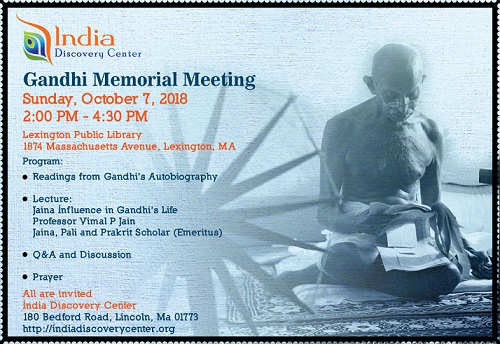Contribute
| Mahatma Gandhi And Non-violent Resistance |
Bijoy Misra
09/26/2018
Mahatma Gandhi and
Non-violent Resistance October 2 would be the 149th birth anniversary of
that weak bespectacled bare-bodied man who caused the fall of an Empire through
pure conviction of human freedom. Raised
as an average young man in a religious family in Gujarat, he had his own
shortcomings and his share of juvenile mischief. He had to support his family and meet his personal
obligations financially and socially. An
incident, which may appear ordinary in a class-conscious society, led him to
change the course of his life. From
Mohandas he became Mahatma, from Gandhi he became Bapu. He is revered as the “the Father of the Nationâ€
in India. Gandhi brought freedom to
millions in India and around the world by being a voice against colonial oppression
and discrimination. Gandhi was the last among the trio in the modern world who
wanted to explore the human condition through personal life and living. The first was Henry David Thoreau, the hermit
of Concord, who declared the human being has a right to live with total freedom
on the planet. Through reams of writing,
he renounced the vanity and pretension in the slavery-driven economy of the
nineteenth century US. Rowing his boat
through the riverways, Thoreau witnessed the play of nature and marveled at the
harmony of the sky and earth. The mystic
man had his spiritual communion through the Bhagavadgita, which he kept by his
bedside and studied frequently. Thoreau was followed by Tolstoy in Russia. Born to a wealthy and aristocratic family,
Tolstoy became an author of renown before he had his spiritual awakening. Being exposed to Indian philosophic thoughts
through the writings of the German philosopher Schopenhauer, Tolstoy reflected
on the oppression of colonialism and the freedom of man, particularly in
India. Exploring his personal Christian
beliefs in empowerment and resurrection, Tolstoy powerfully espoused the
principle of nonviolent resistance in his writings. It came upon Gandhi in South Africa to experiment on the
principles put together by Thoreau and Tolstoy.
Gandhi was personally affected and he witnessed the unfair practices of
exploitation by the colonial rulers. Gandhi
interpreted nonviolence from his Jaina roots and coined the word
“satyagrahaâ€. A nonviolent resistance as
thought by Thoreau and Tolstoy was to refrain using force against force, but the
Satyagraha volunteer was supposed to refrain from harboring any ill-feeling towards
the oppressor. One opposes the action
but retains friendship with the person conducting the action. Through this, Gandhi made his movement as an
experiment in discovering truth in humanity.
Gandhi’s experiment succeeded. In modified forms it has been tried out in
various other situations in the world. October
2 is observed as International Non-violence Day in the world through the United
Nations. India Discovery Center recalls Gandhi and his life in a
special Gandhi Memorial Meeting scheduled at Lexington Public Library on
Sunday, October 7, 2018 at 2 PM. We will
have readings from Gandhi’s Autobiography and a lecture entitled “Jaina
Influence in Gandhi’s Life†by Professor Vimal Prakash Jain, a veteran Gandhi
scholar. The event and the lecture are
free. Please contact Sri Chandu Shah at chandu420@gmail.com or Mr. Sanjeev
Tripathi sanjeevkt@hotmail.com to participate in the readings.
You may also access this article through our web-site http://www.lokvani.com/
